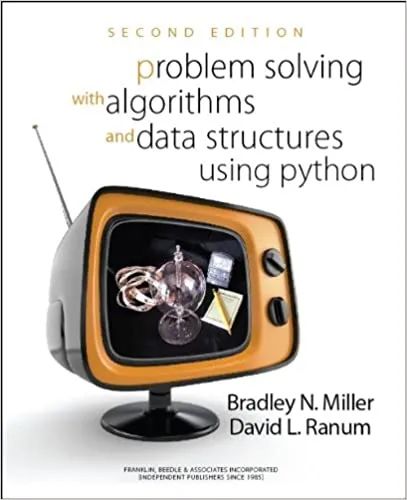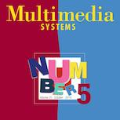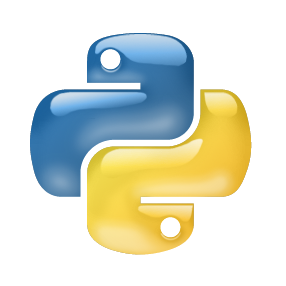基于Python介绍算法和数据结构的在线互动书,240页pdf
这本教科书是关于计算机科学的。它也是关于Python的。然而,还有更多。算法和数据结构的研究是理解计算机科学的核心。学习计算机科学与学习其他困难的学科没有什么不同。要想成功,唯一的方法就是有意识地、不断地接触基本思想。初学计算机的科学家需要实践,以便在继续学习课程中较复杂的部分之前有一个彻底的了解。此外,初学者需要获得成功的机会和获得信心。本教材旨在作为数据结构和算法的第一门课程的教材,通常作为计算机科学课程的第二门课程教授。虽然第二门课程被认为比第一门课程更高级,但本书假设你是这个水平的初学者。您可能还在努力学习第一门计算机科学课程的一些基本思想和技能,但已经准备好进一步探索这一学科并继续实践解决问题的方法。我们将介绍抽象数据类型和数据结构、编写算法和解决问题。我们将研究大量数据结构,并解决出现的经典问题。你在这里学到的工具和技术将会在你继续学习计算机科学的过程中不断地被应用。
1. Introduction
1.13.1. A
FractionClass1.13.2. Inheritance: Logic Gates and Circuits
1.9.1. String Formatting
1.8.1. Built-in Atomic Data Types
1.8.2. Built-in Collection Data Types
1.1. Objectives
1.2. Getting Started
1.3. What Is Computer Science?
1.4. What Is Programming?
1.5. Why Study Data Structures and Abstract Data Types?
1.6. Why Study Algorithms?
1.7. Review of Basic Python
1.8. Getting Started with Data
1.9. Input and Output
1.10. Control Structures
1.11. Exception Handling
1.12. Defining Functions
1.13. Object-Oriented Programming in Python: Defining Classes
1.14. Summary
1.15. Key Terms
1.16. Discussion Questions
1.17. Programming Exercises
2. A Proper Class
2.1.1. A Basic implementation of the MSDie class
2.1. Writing a Proper Python Class
2.2. Making your Class Comparable
3. Analysis
3.4.1. Solution 1: Checking Off
3.4.2. Solution 2: Sort and Compare
3.4.3. Solution 3: Brute Force
3.4.4. Solution 4: Count and Compare
3.1. Objectives
3.2. What Is Algorithm Analysis?
3.3. Big-O Notation
3.4. An Anagram Detection Example
3.5. Performance of Python Data Structures
3.6. Lists
3.7. Dictionaries
3.8. Summary
3.9. Key Terms
3.10. Discussion Questions
3.11. Programming Exercises
4. Basic Data Structures
4.23.1. Analysis of Linked Lists
4.21.1. The
NodeClass4.21.2. The
Unordered ListClass4.14.1. Main Simulation Steps
4.14.2. Python Implementation
4.14.3. Discussion
4.9.1. Conversion of Infix Expressions to Prefix and Postfix
4.9.2. General Infix-to-Postfix Conversion
4.9.3. Postfix Evaluation
4.1. Objectives
4.2. What Are Linear Structures?
4.3. What is a Stack?
4.4. The Stack Abstract Data Type
4.5. Implementing a Stack in Python
4.6. Simple Balanced Parentheses
4.7. Balanced Symbols (A General Case)
4.8. Converting Decimal Numbers to Binary Numbers
4.9. Infix, Prefix and Postfix Expressions
4.10. What Is a Queue?
4.11. The Queue Abstract Data Type
4.12. Implementing a Queue in Python
4.13. Simulation: Hot Potato
4.14. Simulation: Printing Tasks
4.15. What Is a Deque?
4.16. The Deque Abstract Data Type
4.17. Implementing a Deque in Python
4.18. Palindrome-Checker
4.19. Lists
4.20. The Unordered List Abstract Data Type
4.21. Implementing an Unordered List: Linked Lists
4.22. The Ordered List Abstract Data Type
4.23. Implementing an Ordered List
4.24. Summary
4.25. Key Terms
4.26. Discussion Questions
4.27. Programming Exercises
5. Recursion
5.1. Objectives
5.2. What Is Recursion?
5.3. Calculating the Sum of a List of Numbers
5.4. The Three Laws of Recursion
5.5. Converting an Integer to a String in Any Base
5.6. Stack Frames: Implementing Recursion
5.7. Introduction: Visualizing Recursion
5.8. Sierpinski Triangle
5.9. Complex Recursive Problems
5.10. Tower of Hanoi
5.11. Exploring a Maze
5.12. Dynamic Programming
5.13. Summary
5.14. Key Terms
5.15. Discussion Questions
5.16. Glossary
5.17. Programming Exercises
6. Sorting and Searching
6.5.1. Hash Functions
6.5.2. Collision Resolution
6.5.3. Implementing the
MapAbstract Data Type6.5.4. Analysis of Hashing
6.4.1. Analysis of Binary Search
6.3.1. Analysis of Sequential Search
6.1. Objectives
6.2. Searching
6.3. The Sequential Search
6.4. The Binary Search
6.5. Hashing
6.6. Sorting
6.7. The Bubble Sort
6.8. The Selection Sort
6.9. The Insertion Sort
6.10. The Shell Sort
6.11. The Merge Sort
6.12. The Quick Sort
6.13. Summary
6.14. Key Terms
6.15. Discussion Questions
6.16. Programming Exercises
7. Trees and Tree Algorithms
7.10.1. The Structure Property
7.10.2. The Heap Order Property
7.10.3. Heap Operations
7.1. Objectives
7.2. Examples of Trees
7.3. Vocabulary and Definitions
7.4. List of Lists Representation
7.5. Nodes and References
7.6. Parse Tree
7.7. Tree Traversals
7.8. Priority Queues with Binary Heaps
7.9. Binary Heap Operations
7.10. Binary Heap Implementation
7.11. Binary Search Trees
7.12. Search Tree Operations
7.13. Search Tree Implementation
7.14. Search Tree Analysis
7.15. Balanced Binary Search Trees
7.16. AVL Tree Performance
7.17. AVL Tree Implementation
7.18. Summary of Map ADT Implementations
7.19. Summary
7.20. Key Terms
7.21. Discussion Questions
7.22. Programming Exercises
8. Graphs and Graph Algorithms
8.1. Objectives
8.2. Vocabulary and Definitions
8.3. The Graph Abstract Data Type
8.4. An Adjacency Matrix
8.5. An Adjacency List
8.6. Implementation
8.7. The Word Ladder Problem
8.8. Building the Word Ladder Graph
8.9. Implementing Breadth First Search
8.10. Breadth First Search Analysis
8.11. The Knight’s Tour Problem
8.12. Building the Knight’s Tour Graph
8.13. Implementing Knight’s Tour
8.14. Knight’s Tour Analysis
8.15. General Depth First Search
8.16. Depth First Search Analysis
8.17. Topological Sorting
8.18. Strongly Connected Components
8.19. Shortest Path Problems
8.20. Dijkstra’s Algorithm
8.21. Analysis of Dijkstra’s Algorithm
8.22. Prim’s Spanning Tree Algorithm
8.23. Summary
8.24. Key Terms
8.25. Discussion Questions
8.26. Programming Exercises
专知便捷查看
便捷下载,请关注专知公众号(点击上方蓝色专知关注)
后台回复“P240” 可以获取《基于Python介绍算法和数据结构的在线互动书,240页pdf》专知下载链接索引








